From the Riverbank 2: Out in the Open
May 11, 2021
This week we’ll think about working outside, developing work from sketches or diving into a painting if you are feeling brave. The world outside can seem quite daunting if you are not used to working in the open and the complexity of some scenes can be overwhelming unless ways can be found to home in on a subject and isolate it from the surrounding “noise”.
Using a camera as a view finder is one way but limits you to composing with one shape. A better way is to take two L-shaped pieces of card which you can view the landscape in endlessly varied formats. Quite a good idea to tape these together once the desired subject and format has been found, preferably with a removable masking tape or similar.
To home in on a suitable composition it’s a good idea to make a few composition and tonal sketches first. Exploring a scene in this way focuses the mind on what most interests you and aids observation and drawing skills enormously. Last week we explored photographs in a similar way.
Below is a way of recording shape and tone in a sketchbook. Charcoal pencil was used in this case but if I had used pencil three or four small sketches could be made on a sketch book page.
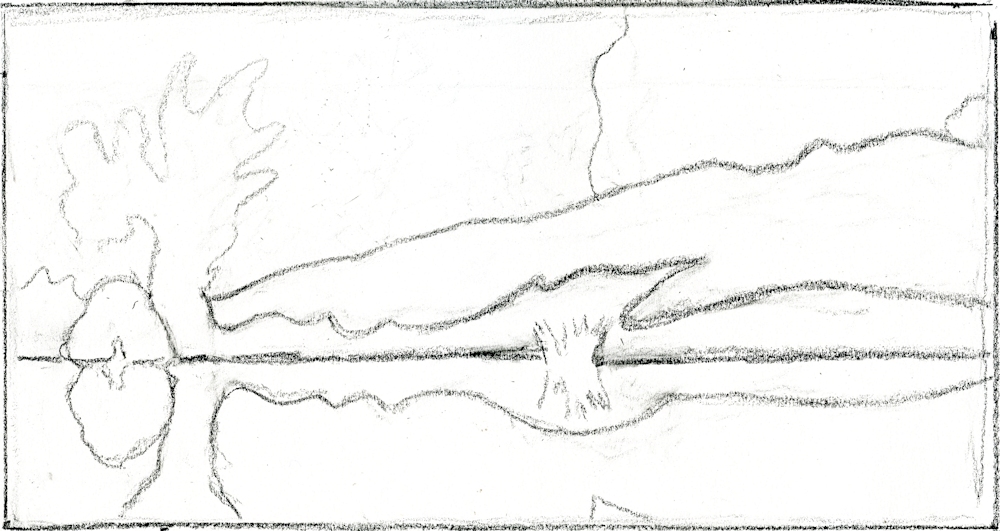
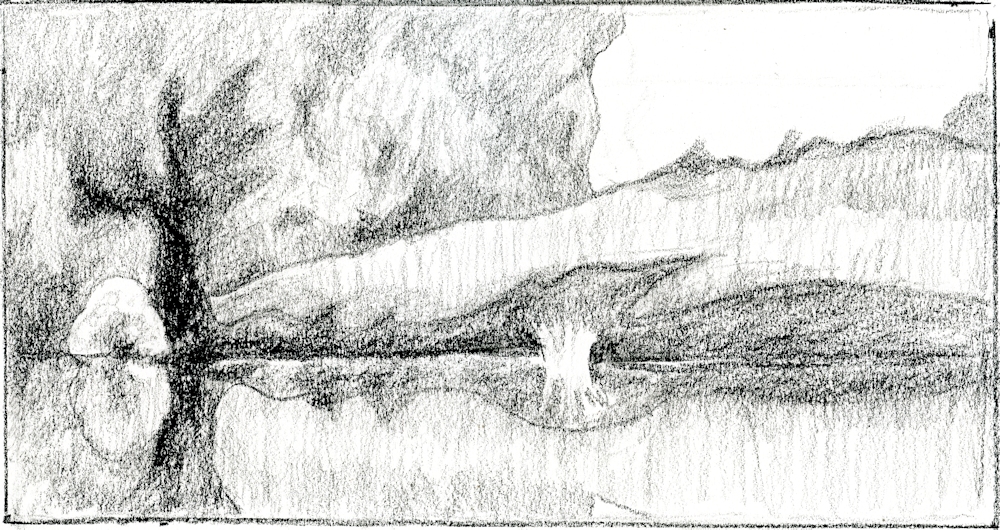
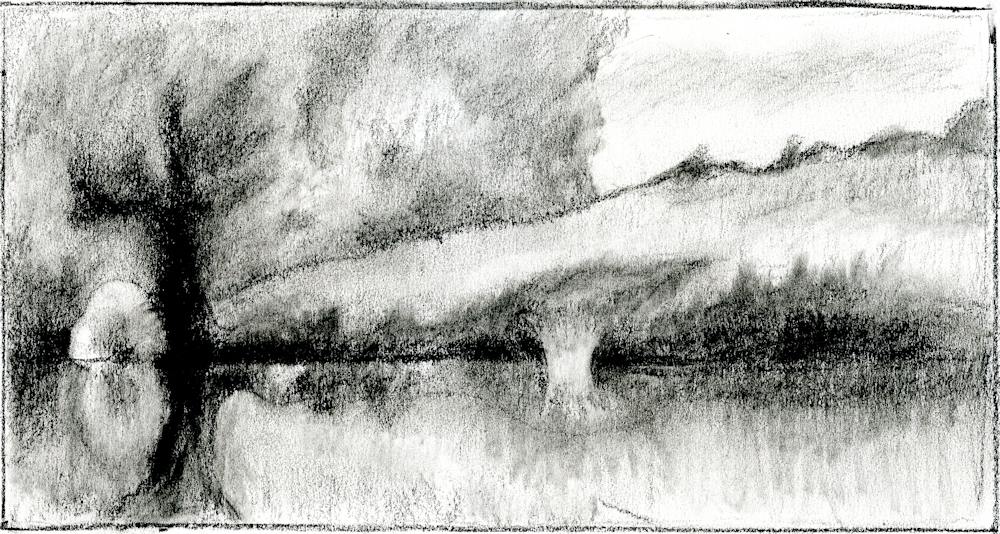
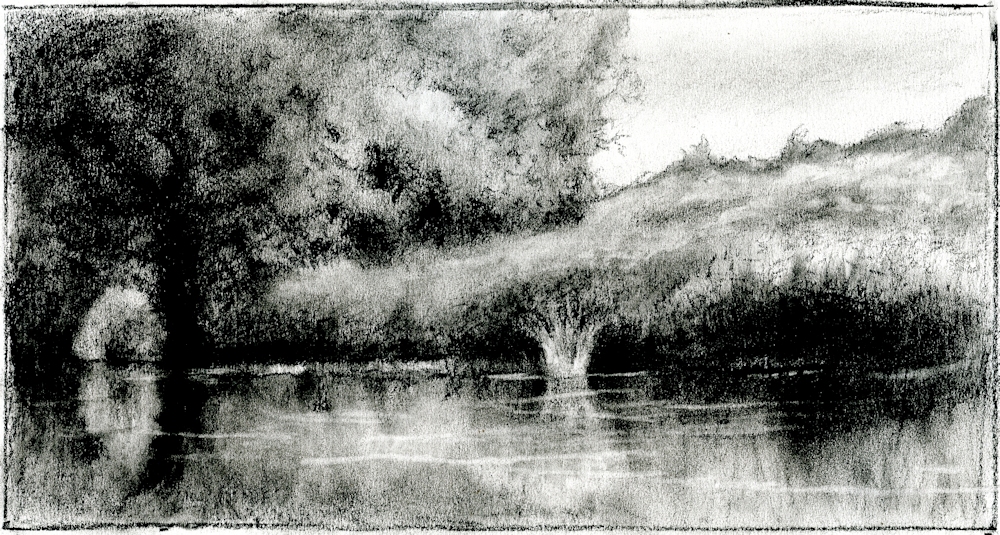
This time make small sketches not worked up drawings to decide on the composition. This is a good exercise whether working directly from the landscape or preparing for a work to be completed in the studio. There is a good case for making both tonal sketches and making colour notes, not necessarily in the same sketch. If there is time separate sketches of any details you may need for the final work can be made. A camera of course is useful but because nature does not always arrange itself in the most interesting or pleasing way, small personal sketches are often a good guide to what should and should not be included.
A silly example would be if I wanted to make a picture of a coot with its reflection. I would think very hard before including or excluding a sign in red paint behind the bird saying DANGER WEIR which was only slightly camouflaged by a nest in front of the sign. If the sign and its reflection was making the painting much more exciting than just the bird, putting the bird in context with that part of the river, it may be good to include. If it did no more than draw attention away from my principal subject or led the eye out of the picture the sign would have to go. Then again I would have the same problem with the coot if my focus was river signage.
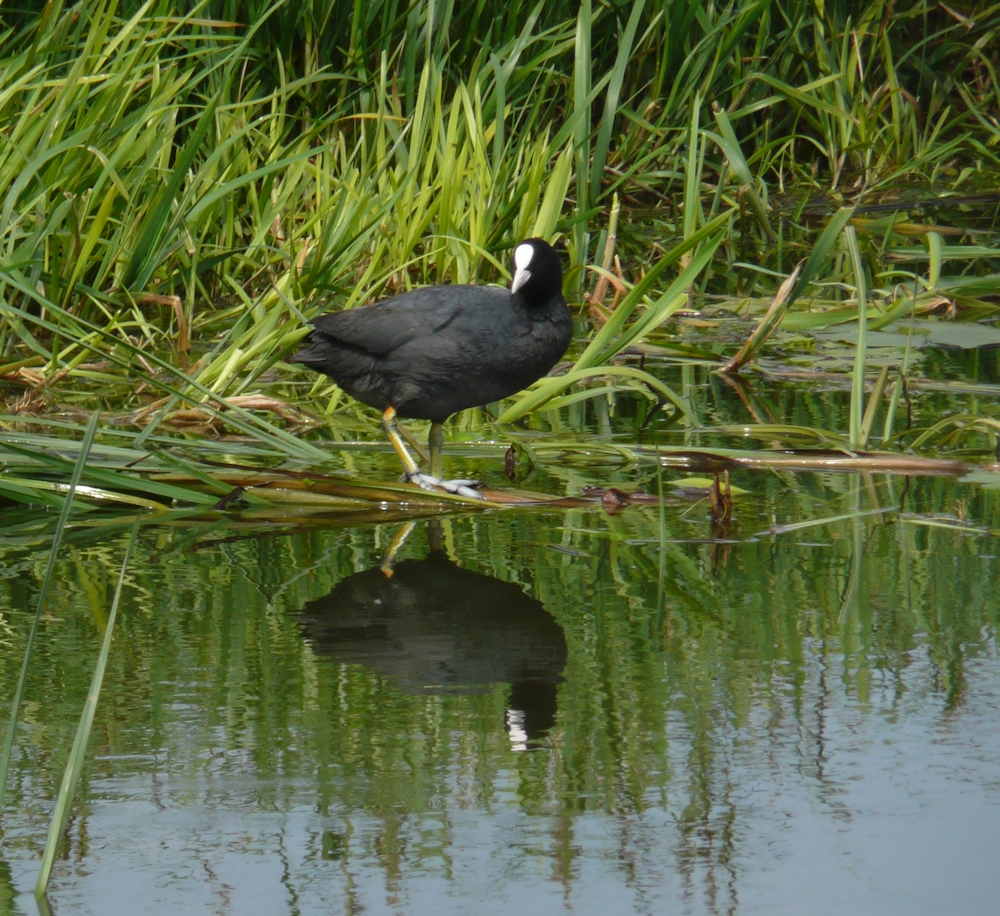
1. Equipment for working outside; minimum for preparatory sketches
Sketchbook, drawing implements: pencil, pen, eraser, small camera and view finder, light weight folding stool
Optional: a few of any kind of coloured pencils or a small box of watercolours , brush, water, water pot; for making colour notes
2. Equipment for working outside; for painting directly from the landscape
Sketchbook, drawing implements: pencil, pen, eraser, small camera, light weight folding stool;
Watercolour painters: Watercolours, pan box useful if working at a fairly small scale as usually have an integral palette, water and water pot, brushes, paper towel (few sheets), small natural sponge (if you have one), drawing board with stretched paper/ heavy weight paper well taped down or small block of paper
Pastel painters: small box of landscape colours (Sienna, green dark, green bright, ultramarine blue dark and light, white, yellow, yellow ochre, crimson, cadmium red middle tone, dark grey or black, purple. These colours are only a suggestion. Handful of pastel pencils if you have any), pastel paper and a board, clips or tape to attach your paper, small can fixative spray, craft knife, pencil sharpener, Blu-tac or putty eraser, few sheets paper towel
If the weather is stormy the challenge will be to paint wildlife or agricultural scene from the riverbank. This could include willows, cows birds, nests waterlilies, reed banks.
Outside the challenge will be to make a composition including one or more of the following; trees, boats and boathouses, lock gates and their reflections, or a weir for the fearless! Be selective; one well painted boat or tree is better than a scribble of a fleet or forest! It would be good to take on board the tonal balance of reflections and objects. Reflections are not always darker than the real object but often are. See how the sky is reflected and how ripples catch the sun, as we will see next week sometimes very literally.
For inspiration visit my as yet unsorted Pinterest Boards at:
https://www.pinterest.co.uk/jhall1282/from-the-riverbank/
Your paintings: